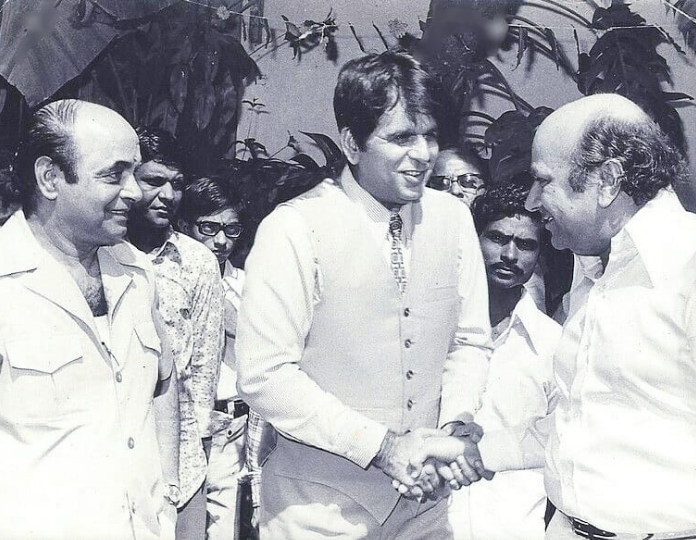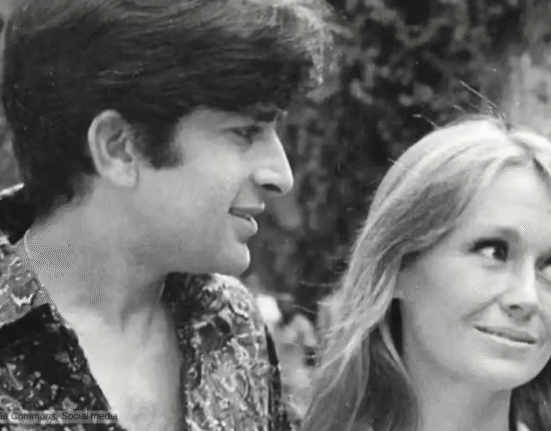Ramanand Sagar was renowned for his masterpiece television series “Ramayan,” which captivated the nation in 1987. While widely recognised as a filmmaker for classics like “Arzoo,” “Ghunghat,” “Zindagi,” and “Ankhen,” his significant contributions as one of the leading Urdu writers of his era are sometimes overlooked. His influence extends beyond the screen, showcasing his multifaceted talents in the realms of cinema, television, and literature.
Love is not as strong as hate is. I want to invoke hate in you with this novel. So that your sentiments are stronger and steadfast. If I have made you hate these killings, rapes, and violence from the bottom of your heart, then I will believe myself and the novel to be successful.”
Sagar about his novel “Aur Insaan Mar Gaya”
Early Life and Education
Ramanand Sagar was born on December 29, 1917, in Asal Guruke, Lahore, into a family with a rich cultural heritage. His great-grandfather, Lala Shankar Das Chopra, migrated from Lahore to Kashmir, and his grandfather, Lala Ganga Ram, had a successful business in Srinagar. Sagar was adopted by his maternal grandmother, who had no sons, and his name was changed from Chandramauli Chopra to Ramanand. After his biological mother passed away, his father remarried, and Sagar had several half-siblings, including the renowned filmmaker Vidhu Vinod Chopra.
Sagar’s early life was marked by hardship and perseverance. He worked as a peon, truck cleaner, soap vendor, and goldsmith apprentice during the day while studying for his degree at night. Sagar was a gold medallist in Sanskrit and Persian from the University of Punjab in 1942. He was still a student when he was already an accomplished writer who wrote short stories, novels, poems, and plays under various pen names.
Ramanand Sagar -The Writer
Beginning his journey as a journalist with the Urdu daily “Daily Milap” in Lahore, Ramanand Sagar steadily climbed the ranks to become its editor. In 1941, he confronted a formidable adversary—Tuberculosis (TB)—and was admitted to a sanatorium in Kashmir. It was an era when TB posed a severe threat, there were very slim chances for his survival.
In the crucible of profound pain and sorrow, the spark of creativity ignited within Ramanand Sagar. He embarked on a literary journey, contributing to the renowned Urdu literary magazine “Adab-e-Mashriq.” His column, titled ‘Maut Ke Bistar Se‘ or ‘Diary of a TB Patient,’ served as a poignant canvas, capturing the essence of his experiences in the confines of a sanatorium.
In 1944, he acted in the Punjabi film Koel, directed by Roop K. Shorey, made in Lahore.
Ramanand Sagar – The Humanitarian
He was living in Srinagar when the Indo-Pak war of 1947–48, began; it was a dark time. He moved to Delhi with his family, and leaving with a Muslim friend, he went back to Kashmir with other literary geniuses like Khwaja Ahmad Abbas, Rajinder Singh Bedi, Chandrakiran Sonrexa, Navtej Singh, Sher Singh, and Raj Bans Khanna, and reached the war front for humanitarian aid.

Abbas recalled, “It was said, writers had come to live their books, and poets had come to die for their poetry!” Sagar’s most famous work, “Aur Insaan Mar Gaya,” was completed at this warfront.
Khwaja Ahmad Abbas Said “He (Sagar) was a personification of the light of hope and humanity. He was that small ray of light that shows the path in the darkness. There was no more darkness, as I had found a pearl of light.”
In Prof. Ishtiaq Ahmad’s opinion, “Aur Insaan Mar Gaya (And Humanity Died) enjoys the reputation of being the most humane and politically neutral novel on the partition”.
In his introduction to Aur Insaan Mar Gaya, written in July 1948, Sagar wrote, “There is a lot inside me that wants to come out of me in the form of writing. But I realise that for a long time to come, I will not be able to write something for only literary purposes. because the need to fill my stomach has become more painful than feeding my soul and intellect.”
He moved to Bombay. It was a huge gain for the film industry and a tragic loss for literature. Hunger always wins at the end.
Ramanand Sagar – The Filmmaker
Ramanand Sagar’s career in the film industry began in 1932. His first job was as a clapper boy in the silent film “Raiders of the Railroad.” He later shifted to Bombay (now Mumbai) in 1949 after India’s partition. In the 1940s, Sagar started out as an assistant stage manager in Prithvi Theatres under the guidance of Prithviraj Kapoor. He also directed a few plays during this period.
Ramanand Sagar’s breakthrough came when he wrote the story and screenplay for Raj Kapoor’s superhit film Barsaat (1949). This success paved the way for his career as a writer and director in the film industry. In 1953 he wrote the story of Sangdil (1953), starring Dilip Kumar and Madhubala. It was loosely based on Charlotte Brontë’s classic novel Jane Eyre. He produced and directed films like “Mehmaan (1953)” and “Bazooband (1954).” Although they did not perform well at the box office.
After the failure of his films, Ramanand Sagar shifted to Madras and started working for Gemini Studio. Sagar wrote stories of Gemini classics like Insaniyat (1955), starring Dilip Kumar and Dev Anand; Raj Tilak (1958); and Paigham (1959), starring Dilip Kumar and Raj Kumar. For Paigham, he even won the Filmfare Award for Best Dialogue.


He also wrote the sories of SU Sunny’s Kohinoor (1960), starring Dilip Kumar and Meena Kumari; and Rajkumar (1964), starring Shammi Kapoor and Sadhana.
Golden Period
Ramanand Sagar came back to direction with successful films like Ghunghat (1960) and Zindagi (1964) for Gemini Studio. Inspired by the success of these films, he decided to restart making films. He started his own film production company, Sagar Art Private Limited. In 1965, he directed and produced the romantic musical “Arzoo,” featuring Rajendra Kumar, Sadhana, and Feroz Khan. The film’s engaging narrative and memorable performances, with its landmark music by Shankar Jaikishan, made it one of the most successful films of that year.
In 1968, he came up with one of Indian cinema’s most famous spy thrillers, “Aankhen,” starring Dharmendra, Mala Sinha, and Mehmood. The film’s gripping storyline and innovative direction earned it critical acclaim and commercial success.
He went on to produce and direct several successful films, including Geet (1970), Lalkaar (1971), Jalte Badan (1973), Charas (1976), Prem Bandhan (1979), Baghavat (1982), Romance (1983), and Salma (1985). His ability to create diverse and engaging stories made him a prominent figure in Indian cinema.
Later Career
Sagar made history with his epic “Ramayan (1987-1988).” The television series remained one of the most iconic and influential works in Indian television history. The series, based on the epic Ramayana, broke several viewership records and became a cultural phenomenon. He also directed the epic TV series Vikram Aur Betaal, Dada Dadi Ki Kahaniyan, Luv Kush, Shri Krishna, Alif Laila, and many more.
Ramanand Sagar married Leelavati Sagar, and the couple had five children. Four sons, Subhash Sagar, Moti Sagar, Prem Sagar, and Anand Sagar, and a daughter, Sarita Sagar. His sons followed in his footsteps and became involved in the entertainment industry, contributing to the family’s legacy. He passed away on 12 December 2005 at the age of 87.
Ramanand Sagar’s granddaughter, Ganga Kadakia, is a renowned painter. His grandson, Shiv Sagar, conducted extensive research for Sagar’s biography, “An Epic Life,” written by Prem Sagar.
Ramanand Sagar on IMDB









